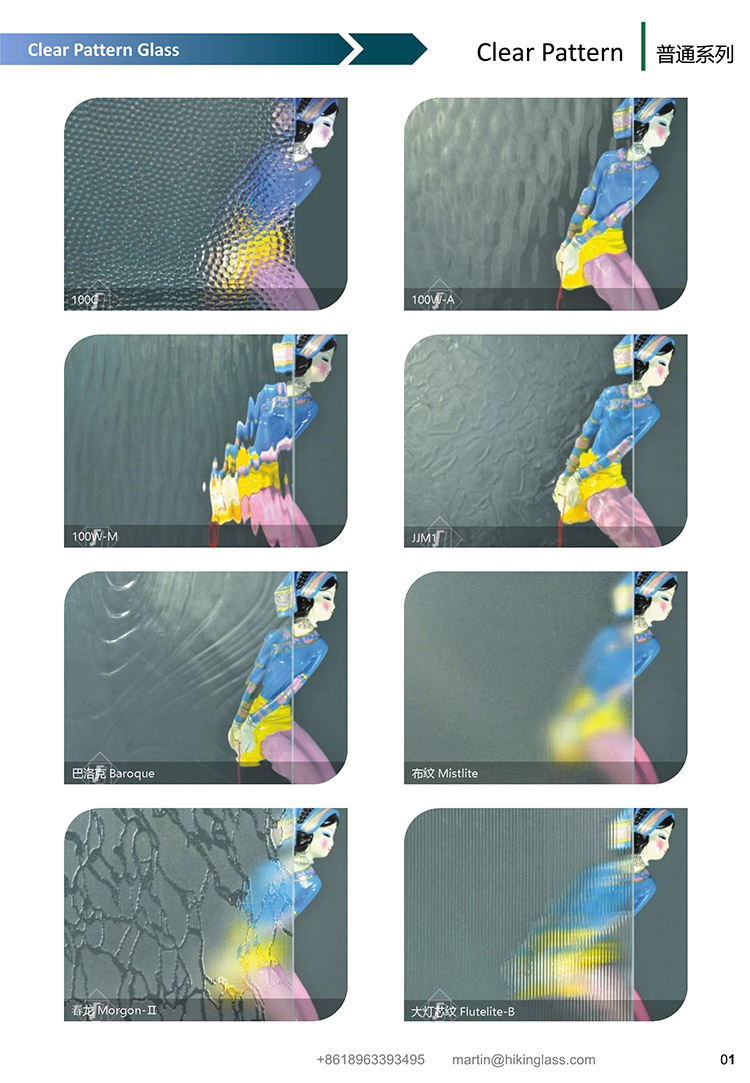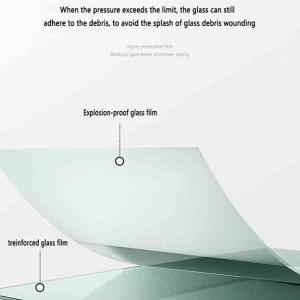History of Decorative Pattern Glass Manufacturing
Pattern glass, known for its distinctive decorative designs, has played a significant role in the evolution of glass manufacturing. From its early beginnings in ancient civilizations to its refinement in the 19th and 20th centuries, pattern glass has seen various technological and artistic advancements. This article explores the history of pattern glass manufacturing, tracing its development through different eras and highlighting key innovations and trends.

Early Beginnings
The use of glass dates back to ancient civilizations, with early examples including obsidian, a naturally occurring volcanic glass used by Stone Age people for tools and weapons[2]. The earliest man-made glass artifacts were discovered in Mesopotamia and Egypt, dating back to around 3500 BCE. These early forms of glass were typically opaque and used for beads and small objects.
The Roman Era
The Romans were instrumental in advancing glassmaking techniques, including the development of glassblowing around the 1st century BCE. This innovation allowed for the creation of more intricate and diverse shapes, setting the stage for decorative glassware. Roman glassmakers began to experiment with patterns and colors, producing vessels with embossed designs and varying hues.
Medieval and Renaissance Developments
During the medieval period, glassmaking centers such as Venice became renowned for their skilled artisans and high-quality glass products. The Venetians developed techniques like millefiori (a method of creating patterns with multicolored glass rods) and enamel painting, which contributed to the decorative appeal of glass items.
The Renaissance period saw further advancements, particularly in the production of stained glass. This era was marked by the use of colored glass in windows, especially in churches and cathedrals, to create intricate and symbolic patterns that told biblical stories and enhanced the aesthetic appeal of sacred spaces[5].
The Industrial Revolution and Victorian Era
The Industrial Revolution in the 18th and 19th centuries brought significant changes to glass manufacturing. The introduction of mechanization allowed for mass production, making glassware more accessible to the general public. During this time, pressed glass techniques were developed, enabling the production of pattern glass on a larger scale.
Pressed glass involved pressing molten glass into molds to create raised patterns and textures. This method was more efficient and cost-effective than traditional hand-cutting techniques, leading to the proliferation of patterned glass items such as tableware, lampshades, and decorative panels. The Victorian era, in particular, saw a surge in the popularity of pattern glass, with intricate designs reflecting the period's ornate aesthetic[3].
The Emergence of Modern Pattern Glass
The late 19th and early 20th centuries marked a golden age for pattern glass manufacturing. Companies like McKee Glass Company, Fostoria Glass Company, and Indiana Glass Company in the United States became renowned for their extensive catalog of patterned glassware. These manufacturers produced a wide range of items, including dinnerware, vases, and decorative pieces, featuring an array of patterns such as hobnail, diamond point, and daisy and button.
One of the most iconic forms of pattern glass from this period is carnival glass. Introduced in the early 20th century, carnival glass was characterized by its iridescent finish, achieved by adding metallic salts to the surface of the glass. This technique created a shimmering effect that made the glass highly desirable and collectible.
Innovations in Glass Patterns
In the mid-20th century, advancements in glass technology and design continued to evolve. The development of new materials and techniques, such as tempered glass and float glass, expanded the possibilities for pattern glass. Designers and artists began to explore more abstract and modern patterns, moving away from the traditional Victorian motifs.
The introduction of automated processes allowed for greater consistency and precision in pattern production. This period also saw a growing interest in mid-century modern design, which influenced the patterns and styles of glassware. Simple, geometric designs became popular, reflecting the minimalist aesthetic of the time.

Contemporary Pattern Glass
Today, pattern glass remains a popular choice for both functional and decorative purposes. Modern manufacturing techniques, including computer-aided design (CAD) and 3D printing, have further enhanced the ability to create intricate and precise patterns[6]. Contemporary designers continue to push the boundaries of pattern glass, experimenting with new forms, textures, and colors.
In addition to traditional tableware and decorative items, pattern glass is now used in architectural applications, such as windows, doors, and partition walls. Advances in glass coating technologies have also allowed for the creation of patterns that can provide privacy while still allowing light to pass through, making pattern glass a versatile material for modern interior design.
Conclusion
The history of pattern glass manufacturing is a testament to human ingenuity and artistic expression. From its ancient origins to its modern-day applications, pattern glass has continually evolved, reflecting the changing tastes and technological advancements of each era. Whether used for practical purposes or as a medium for artistic creation, pattern glass remains an enduring and beloved material in the world of glassmaking.
 English
English Russian
Russian




